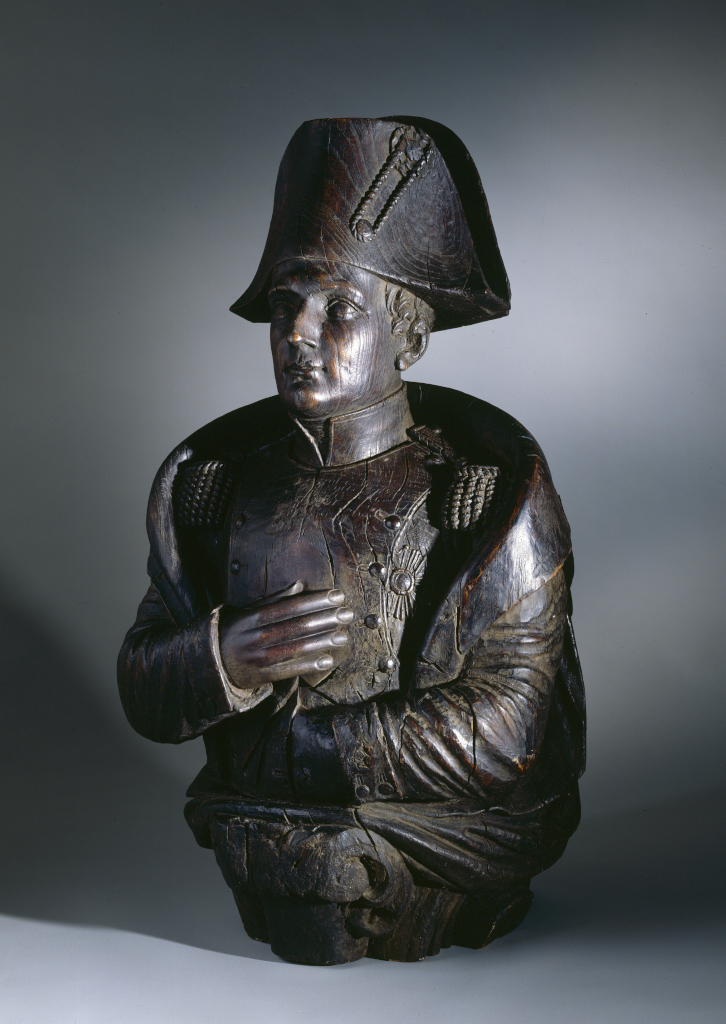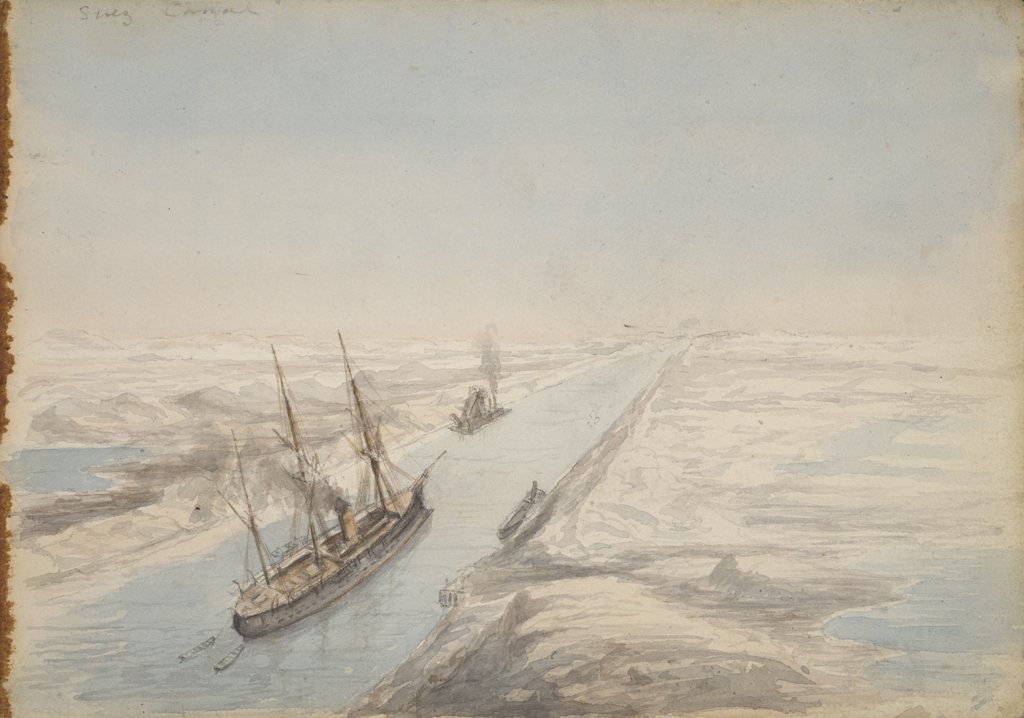So far, world events of 2020 and 2021 have been interesting, to say the very least. In the maritime world, a unique event occurred on March 23, 2021. If you watched the news that day and for many days following, you most likely heard about and saw how it unfolded. Can you guess what I’m talking about? I’ll give you a second before I reveal the answer.
Pause for Dramatic Effect…
I am speaking of the container ship which blocked the Suez Canal for six days before finally being freed. Ever Given is a 20,000 TEU container ship, constructed in 2018 and sailing under the flag of Panama. It is approximately 1,300 feet long (399 meters), nearly 140 feet wide (59 meters) with a draft of 49 feet (15 meters). (Quick note: TEU stands for Twenty-foot Equivalent Unit.) This is a shipping container whose internal dimensions measure about 20 feet long, 8 feet wide, and 8 feet tall.
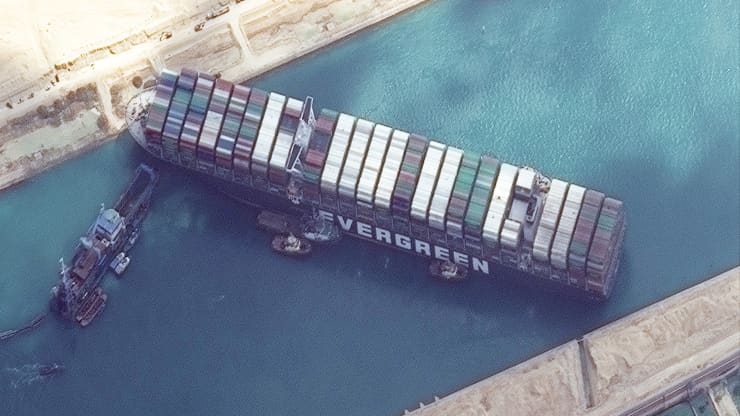
While passing through a single lane portion of the canal, the 200,000-ton ship encountered an unexpected wind storm that threw it off course and forced it to become lodged diagonally in the canal’s sandbanks. Ever Given blocked the passageway to other vessels attempting to move through the canal. It took six days before the ship was dislodged. Egyptian authorities used cranes, tugboats, and additional machinery to remove the vessel and bring it into port. But by then, billions of dollars in global trade are said to have been lost, much of which is said to be from the oil trade industry. It remains detained while Egyptian authorities investigate the incident and estimate the cost owed for dislodging the ship. For now, order has been restored, and the transportation of goods worldwide resumes.
Although this is not the first major event in the Suez Canal’s history, for us presently, it is certainly most interesting. We at The Mariners’ Museum and Park thought we would take this global newsworthy topic to discuss some of the canal’s history and show off some cool things from our Collection. Before we explore the Suez Canal a bit further, I would like to quickly share our mission statement: The Mariners’ Museum and Park connects people to the world’s waters, because through the waters—through our shared maritime heritage—we are connected to one another. I share this, not only to emphasize what we as an institution are about, but also to demonstrate how the Suez Canal is a great example of connecting waters, and what these connections can mean on a global scale.
Here is Some Cool History About the Suez Canal
The Suez Canal [Arabic: Qanāt al Suways] is a manmade marvel that progressively transformed the maritime industry. How so? Well, it allowed ships to pass from the Mediterranean Sea to the Red Sea. These two bodies of water were previously separated by an isthmus that prevented commerce and recreational travel. The opening of the canal in 1869 created the shortest maritime route from Europe to the western Pacific and Indian Oceans. West and east were now more closely connected. No longer were ships forced to navigate around the African continent. This canal reduced sea voyages by nearly 4,300 miles (7,000 km). Shorter distances mean faster travel; faster travel means faster trade opportunities, which leads to more money for companies moving goods along this route. The canal spreads 120 miles (193 km) between the two Egyptian cities of Port Said [Arabic: Būr Saʿīd] in the north and Suez [Arabic: Al Suways] in the south.
Ancient Egyptians were among the first to develop a similar concept of a water passage linking the Mediterranean and Red Seas. Pharaohs as far back as the 18th century BC began constructing a similar channel. Their hope was to expand trade and trade routes used by the Egyptians and their trading partners. The Ancient Egyptians were able to successfully create a link from the Nile River to the Red Sea. Yet, despite over many attempts throughout several centuries, no connection between the Mediterranean and Red Seas was successful. While many rulers began planning, and even early construction of a canal, all efforts were abandoned for one reason or another. But the evidence remains that the Suez Canal, or at least the notion of a canal, dates its origins back to the great days of the Ancient Egyptian Pharaohs. I find this a very interesting fun fact about the canal. Furthermore, I think this helps exemplify our mission statement, and how even centuries ago, the world’s waters were viewed as a means of connecting cultures and opportunity.
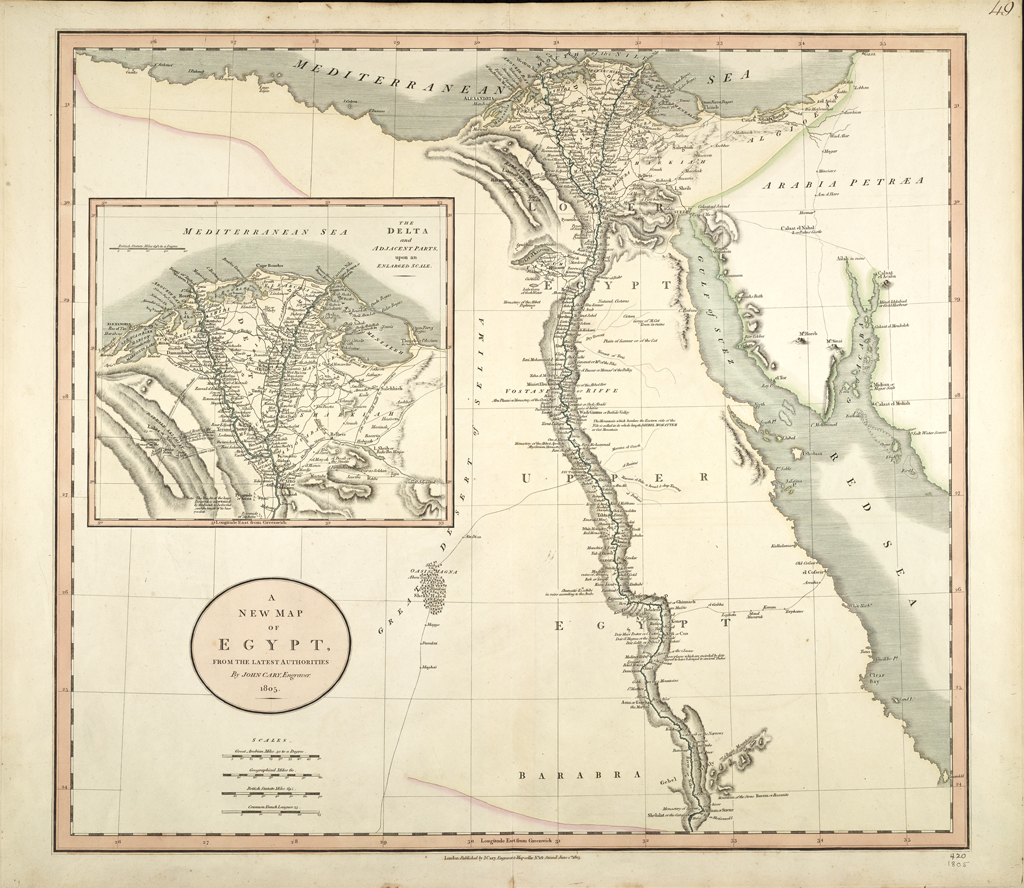
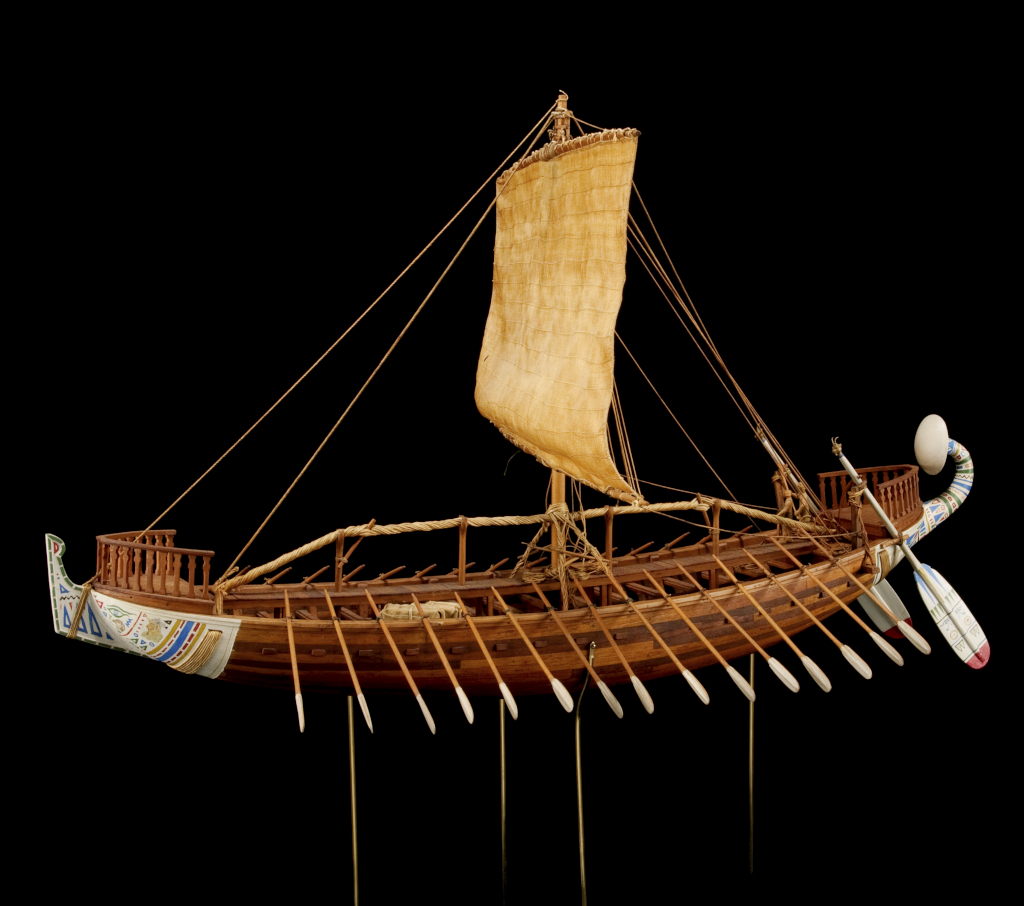
Fast forward to the Modern Era
We jump ahead several millennia to the age of Napoleon Bonaparte. Napoleon, along with several hundred ships and several thousand men, invaded Egypt in 1798. France during this period was at war with Britain. Britain had a lucrative trade economy throughout the Mediterranean region and throughout the Indian Ocean into India. Capturing Egypt was a plan of economic warfare by the French. By controlling the area, France would be
able to cut off Britain’s import and export of goods, thus damaging their economy and ability to fight the French. Part of his plan was cut through the isthmus separating the Mediterranean Sea and Red Sea to create a faster trade route controlled by the French. Between 1798 and 1799, Napoleon began preparations for construction of a canal, but it was never completed. So what happened? The surveyors hired by Napoleon made the very wrong conclusion that the level of the Red Sea was higher than the level of the Mediterranean Sea. The surveyors warned that construction would result in catastrophic flooding across the Nile Delta. This incorrect assumption halted further progress on the canal. It would be another 60 years before an attempt for construction would be made.
The Suez Canal is Built. Finally!
It would be French diplomat Ferdinand Marie de Lesseps who would make the canal a reality. By earning political and financial backing from Emperor Napoleon III, Lesseps negotiated an agreement with the Egyptian viceroy to form the La Compagnie Universelle du Canal Maritime de Suez, or the Suez Canal Company. According to suezcanal.gov.eg, the official website on the Suez Canal Authority, it was estimated that, “a total of 2,613 million cubic feet of earth would have to be moved, including 600 million on land, and another 2,013 million dredged from water. The total original cost estimate was 200 million francs.”1 Lesseps brought in engineers, and construction of the Suez Canal began in April 1859. Britain was against the canal’s construction, as they felt it was an attempt to restrict their trading courses. They opposed it strongly. And although regular heated words were exchanged publicly between Lesseps and the British ambassador to France, production pressed onward. After nearly 10 years, the canal opened in November 1869. What the Pharaohs of old began ages ago was finally a reality, and maritime travel, trade, and shipping industries of the world were never the same.
The images below are of a medallion commemorating opening of Suez Canal. The obverse features a left facing profile of Ferdinand de Lesseps surrounded by motifs representing Egypt (pyramids, camels, sphinx, and palms) and canal building equipment. In the center of the medal is a bird’s eye view of the canal with the words “Mer Mediteranee” on the left side and “Mer Rouge” on the right.
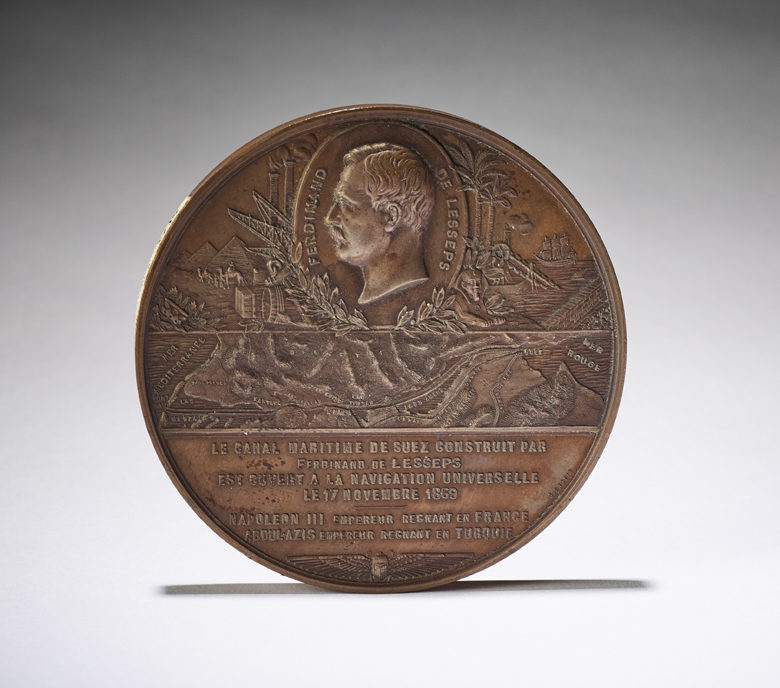
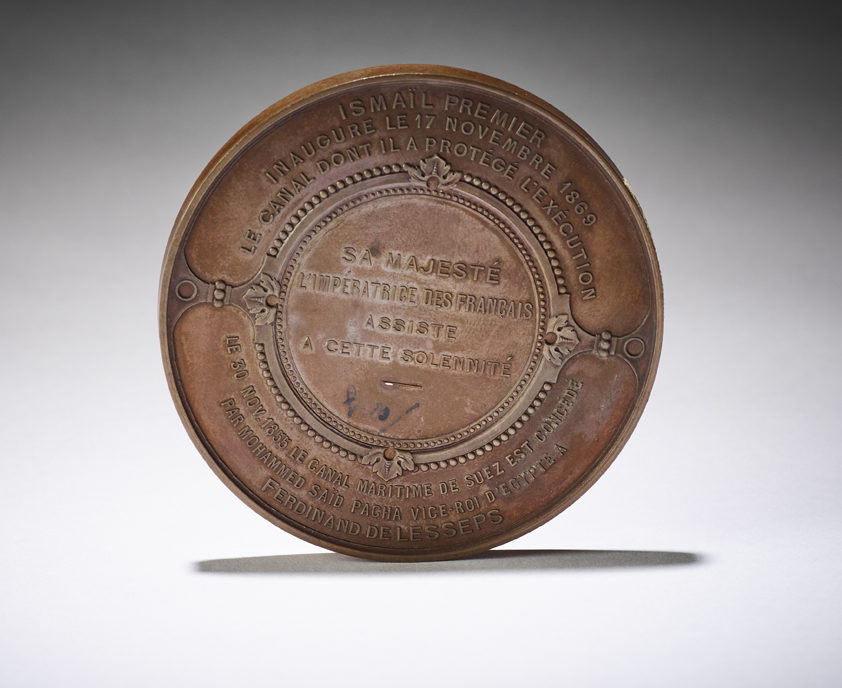
Conflict and Crisis
Throughout its history, ownership and control for the canal have led to tension and numerous conflicts between Britain, France, and Egypt. The canal remained under the control of two powers until July 1956, when Egyptian President Gamal Abdel Nasser nationalized it. The Suez Canal Authority has since operated it. This change in control by the Egyptian government led to the Suez crisis. Israeli, British, and French forces launched an attack on Egypt. The United Nations quickly stepped in, demanding a cease-fire. And in a rare instance of an alliance, the United States and the Soviet Union – as it was named then – pressured the three invading nations to withdraw. Britain and France did so by December 1956; Israel withdrew in March 1957.
We leave you with one last fun fact question. Did you know that the international shipping industry is responsible for the movement of nearly 90 percent of world trade? No wonder the Suez Canal is one of the world’s most heavily used and vital shipping lanes. The Ever Given episode is a
current event today. But as time moves on, it will become an unforgettable part of the canal’s long, impressive history.
